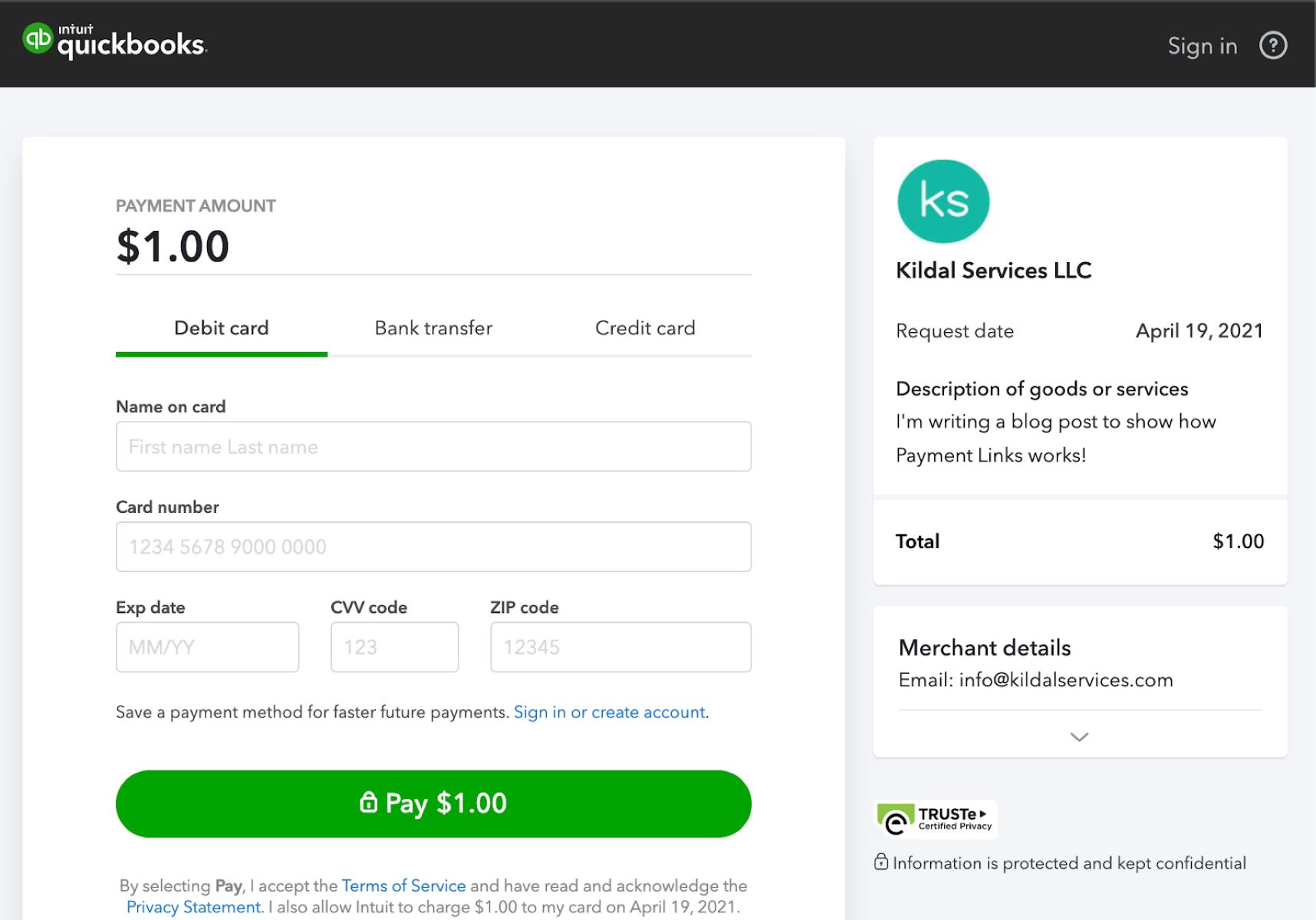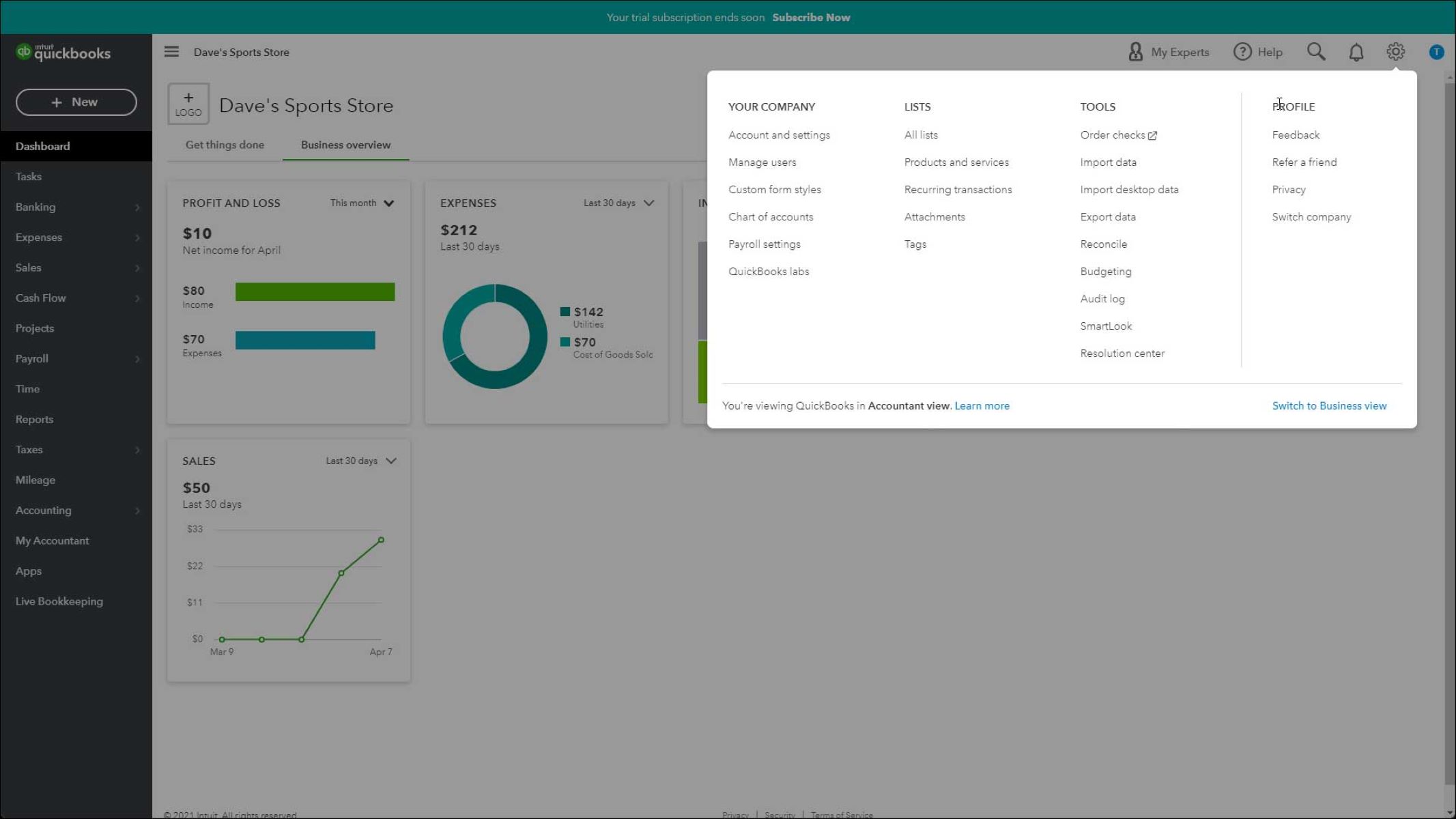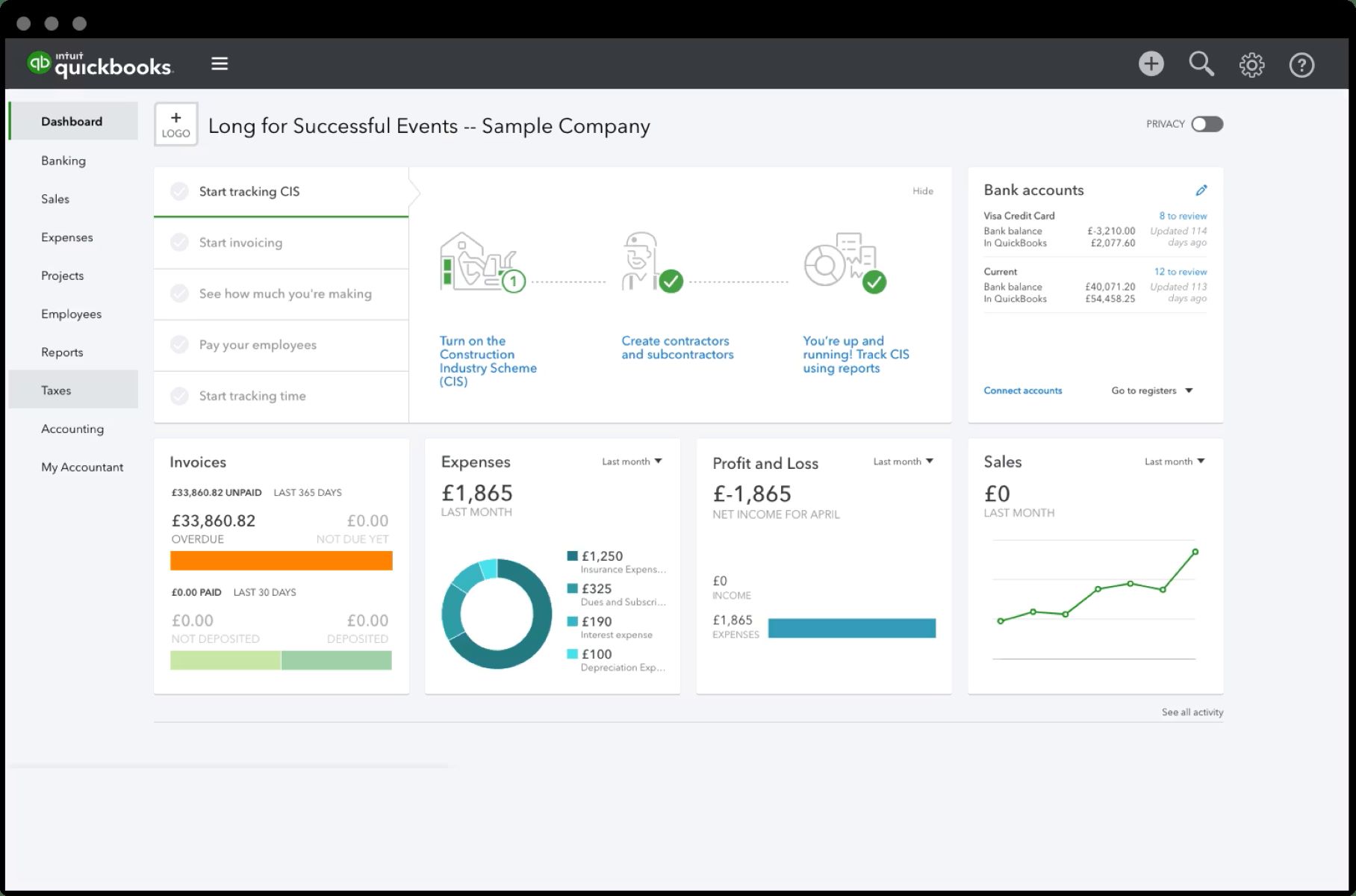Introduction
Welcome to our comprehensive guide on how to process credit card payments in QuickBooks Online. In today’s digital age, accepting credit card payments has become a necessity for businesses of all sizes. QuickBooks Online offers a user-friendly and efficient way to manage your financial transactions, including credit card payments.
In this guide, we will walk you through the step-by-step process of setting up QuickBooks Online to accept credit card payments, connecting your merchant account, choosing a payment gateway, and getting customer information for credit card payments. We will also cover how to record credit card payments in QuickBooks Online, create invoices with credit card payments, reconcile your credit card transactions, and generate reports to track and analyze your payment activity.
Processing credit card payments in QuickBooks Online not only streamlines your payment collection process but also ensures accuracy in recording and reconciling transactions. With the right setup and knowledge of the platform’s features, you can save time, reduce errors, and have a clear overview of your business’s financial health.
Whether you’re a small business owner, a freelancer, or managing the finances for a larger organization, this guide will provide you with the essential information and step-by-step instructions to successfully process credit card payments in QuickBooks Online. With our guidance, you’ll be able to improve your cash flow, provide a convenient payment option to your customers, and gain valuable insights into your business’s financial performance.
Now, let’s dive in and explore how you can effectively process credit card payments in QuickBooks Online.
Setting Up QuickBooks Online for Credit Card Payments
Before you can start processing credit card payments in QuickBooks Online, you need to ensure that your account is properly set up to accept these payments. Here are the essential steps to get you started:
- Sign up for a QuickBooks Online account: If you don’t already have one, visit the QuickBooks website and sign up for a QuickBooks Online account. Choose a plan that suits your business needs and budget.
- Enable payments in QuickBooks Online: After signing in to your QuickBooks Online account, go to the Settings menu and select “Account and Settings.” From there, navigate to the “Payments” tab and click on “Learn More” to enable payments. Follow the prompts to set up your payments account.
- Verify your business information: QuickBooks Online will require you to verify your business information, such as your legal business name, address, phone number, and tax identification number. Ensure that these details are accurate and up to date.
- Choose your preferred payment methods: QuickBooks Online supports various payment methods, including credit cards, bank transfers, and online payment gateways like PayPal. Review the available options and select the payment methods that you want to offer to your customers.
- Set up your bank account: To receive credit card payments, you need to link your bank account to QuickBooks Online. Navigate to the “Banking” tab, select “Connect Account,” and follow the instructions to establish the connection with your bank.
Setting up QuickBooks Online for credit card payments may involve additional steps depending on your specific requirements and preferences. Take the time to explore the available settings and customizations to ensure that your account is fully optimized for accepting credit card payments.
Once you have completed the initial set up, you’re ready to connect your merchant account and choose a payment gateway. We will discuss these steps in the next sections of this guide.
Connecting Your Merchant Account to QuickBooks Online
In order to process credit card payments seamlessly in QuickBooks Online, you will need to connect your merchant account. Here’s how:
- Choose a merchant account provider: A merchant account is a specialized bank account that allows you to accept credit card payments. There are several merchant account providers available, such as Stripe, Square, PayPal, or your existing bank. Research different providers to find the one that best fits your business needs and offers competitive rates.
- Apply for a merchant account: Once you’ve selected a provider, visit their website and follow the application process to create a merchant account. You’ll need to provide information about your business, including your legal name, business type, industry, and payment processing history.
- Receive approval and set up your account: After submitting your application, the merchant account provider will review your information and decide whether to approve your account. Once approved, they will provide you with the necessary login credentials and instructions to set up your account.
- Integrate your merchant account with QuickBooks Online: In QuickBooks Online, go to the Settings menu and select “Payments.” Under the “Merchant Services” section, click on “Connect” or “Set Up” to link your merchant account. Follow the prompts to enter your account details and authorize the connection between QuickBooks Online and your merchant account.
By connecting your merchant account to QuickBooks Online, you enable seamless integration between your payment processing and accounting systems. This synchronization eliminates the need for manual data entry and ensures that your transactions are accurately recorded in your financial records.
Once your merchant account is successfully connected, you can start accepting credit card payments directly through QuickBooks Online. This streamlined process saves you time, reduces errors, and provides a smooth experience for your customers.
In the next section, we will discuss the process of choosing a payment gateway, which is an essential component of processing credit card payments in QuickBooks Online.
Choosing a Payment Gateway
A payment gateway acts as the intermediary between your customers, their credit card information, and your merchant account. It securely processes credit card transactions and ensures that funds are transferred from your customers’ accounts to your merchant account. When selecting a payment gateway to use with QuickBooks Online, consider the following factors:
- Compatibility with QuickBooks Online: Ensure that the payment gateway you choose is compatible with QuickBooks Online. This will enable seamless integration between your payment processing and accounting systems.
- Security and PCI compliance: Payment gateways should adhere to strict security standards, such as Payment Card Industry Data Security Standard (PCI DSS) compliance, to protect your customers’ sensitive payment information. Make sure that the payment gateway you select provides robust security measures.
- Supported payment methods: Different payment gateways support different payment methods, such as credit cards, debit cards, e-wallets, and bank transfers. Consider which payment methods are most commonly used by your customers and choose a gateway that supports those options.
- Transaction fees: Payment gateways typically charge transaction fees for each credit card payment processed. Compare the transaction fees offered by various providers to ensure that they align with your budget and business needs.
- Customer support: It’s important to choose a payment gateway provider that offers reliable customer support. In case you encounter any issues or need assistance, prompt and helpful customer support can make a significant difference in resolving problems quickly.
Some popular payment gateway options compatible with QuickBooks Online include Stripe, PayPal Payments Pro, Authorize.Net, and Square. Research the features, pricing, and reputation of different providers to determine which one best suits your business requirements.
Once you have chosen a payment gateway, you will need to set up the integration between the payment gateway and QuickBooks Online. This integration allows for automatic synchronization of transaction data, making it easier for you to track and reconcile your credit card payments within your accounting system.
Now that you have selected a payment gateway, the next step is to gather customer information for credit card payments. We will discuss this in the following section.
Getting Customer Information for Credit Card Payments
When processing credit card payments in QuickBooks Online, it’s essential to gather accurate customer information to ensure smooth transactions and proper record-keeping. Here are the steps to obtain customer information for credit card payments:
- Create customer profiles: In QuickBooks Online, navigate to the Customers or Sales tab and create individual customer profiles. Enter relevant details such as name, email address, billing address, and contact information.
- Request credit card information securely: To process credit card payments, you will need to collect the credit card details from your customers. It’s essential to prioritize data security and use secure methods to collect this information. One option is to use a payment gateway that offers secure online payment forms or checkout portals, where customers can enter their card details directly.
- Store credit card information securely: When storing customer credit card information, it’s crucial to prioritize security and comply with PCI DSS guidelines. This means avoiding storing sensitive cardholder data in your own systems and instead using tokenization or encryption methods provided by your payment gateway.
- Obtain consent and communicate security measures: Inform your customers about how their credit card information will be stored, processed, and secured. Clearly communicate your privacy policy, terms and conditions, and the steps you take to protect their data. Obtain their consent and provide them with reassurance that their information is safe.
By collecting and storing customer information securely, you not only ensure the smooth processing of credit card payments but also build trust with your customers. Demonstrating a commitment to data security and privacy can enhance your reputation and encourage customer loyalty.
Remember to regularly review and update customer information to ensure accuracy and maintain up-to-date payment details. This will help streamline future transactions and reduce any potential payment-related issues.
In the next section, we will explore how to record credit card payments in QuickBooks Online to keep your financial records accurate and up to date.
Recording Credit Card Payments in QuickBooks Online
Recording credit card payments in QuickBooks Online is crucial for maintaining accurate financial records and tracking your business’s cash flow. Here’s a step-by-step guide on how to record credit card payments:
- Create a sales receipt or invoice: In QuickBooks Online, navigate to the Customers or Sales tab and create a new sales receipt or invoice for the transaction. Enter the customer’s information, including the items or services purchased and the payment method.
- Select the credit card payment option: When creating the sales receipt or invoice, choose the credit card payment option to indicate that the payment is made via credit card.
- Enter the payment details: Fill in the payment details, including the credit card type, cardholder name, card number, expiration date, and CVV (card verification value) code. If you have already stored customer credit card information securely in QuickBooks Online, you can select the customer’s saved card instead of manually entering the details.
- Record the payment: Once you have entered the payment details, record the credit card payment by selecting the appropriate bank or credit card account where the funds will be deposited.
- Save the transaction: After reviewing the transaction details for accuracy, save the sales receipt or invoice. QuickBooks Online will update your financial records, reflecting the credit card payment and its impact on your revenue and accounts receivable.
It’s important to note that QuickBooks Online offers other payment recording options, such as recording a direct deposit from a payment processor or importing transactions from a connected payment gateway. Explore these options to find the most efficient method for recording credit card payments in your specific business scenario.
By consistently recording credit card payments in QuickBooks Online, you ensure that your financial records align with your actual payment activity. This accuracy enables you to generate accurate reports, track customer balances, and effectively manage your business’s financial health.
In the next section, we will discuss how to create invoices with credit card payments, providing your customers with a convenient and professional payment experience.
Creating Invoices with Credit Card Payments
Creating invoices with credit card payment options in QuickBooks Online allows you to offer your customers a convenient and streamlined payment experience. Here’s how to create invoices that include the option to pay by credit card:
- Navigate to the Invoices tab: In QuickBooks Online, go to the Customers or Sales tab and select “Invoices.”
- Create a new invoice: Click on the “New Invoice” button to create a new invoice for your customer. Fill in the necessary details, including the customer’s information, the products or services provided, and the invoice amount.
- Enable credit card payment options: In the invoice creation form, enable credit card payment options by selecting the appropriate payment integration or payment gateway. This allows your customers to make payments directly through the invoice using their credit cards.
- Specify the payment terms: Clearly state the payment terms on the invoice, including the due date, accepted payment methods, and any late payment penalties or discounts for early payment.
- Send the invoice to your customer: Once the invoice is complete, save it and send it to your customer. QuickBooks Online offers various options for sending invoices, such as email or printing a physical copy.
- Receive and reconcile payment: When your customer makes a credit card payment through the invoice, you will receive the payment in your designated bank or merchant account. Record the payment in QuickBooks Online and reconcile it with the corresponding invoice.
By creating invoices with credit card payments, you provide your customers with a convenient and secure way to settle their outstanding balances. This flexibility can expedite the payment process, improve cash flow, and enhance customer satisfaction.
Additionally, QuickBooks Online allows you to track and monitor the status of your invoices, ensuring that you stay on top of your accounts receivable. You can easily generate reports to analyze your outstanding invoices, monitor payment trends, and address any late payments.
In the next section, we will explore how to reconcile credit card payments within QuickBooks Online, ensuring that your financial records are aligned with your bank statements.
Reconciling Credit Card Payments in QuickBooks Online
Reconciling credit card payments in QuickBooks Online is an important step to ensure that your financial records accurately reflect the transactions recorded on your bank or credit card statements. Here’s a step-by-step process for reconciling credit card payments:
- Access the Reconcile tool: In QuickBooks Online, navigate to the Accounting or Banking tab and select “Reconcile.”
- Choose the appropriate credit card account: Select the credit card account that you want to reconcile from the list of accounts. Ensure that you choose the correct statement period for reconciliation.
- Match transactions: In the Reconcile tool, QuickBooks Online will display a list of your credit card transactions for the selected statement period. Compare these transactions with your bank or credit card statement, and mark them as “Cleared” or “Matched” if they match your records.
- Record unmatched transactions: If you come across any transactions on your bank statement that are not recorded in QuickBooks Online or vice versa, mark them as “Unmatched.” These transactions will need to be investigated and resolved.
- Reconcile the statement: After reviewing and marking all the transactions, confirm that the “Ending Balance” in QuickBooks Online matches the ending balance on your bank or credit card statement. If they match, click on the “Finish Now” button to finalize the reconciliation.
Regularly reconciling your credit card payments in QuickBooks Online ensures that your financial records accurately reflect the transactions and balances on your bank or credit card statements. This process helps identify any discrepancies or errors in recording and provides you with a clear understanding of your business’s true financial position.
Proper reconciliation also allows you to spot any fraudulent or unauthorized charges, ensuring the security of your credit card transactions and protecting your business’s financial integrity.
In the next section, we will dive into generating reports for credit card payments, providing valuable insights into your payment activity and financial performance.
Generating Reports for Credit Card Payments
Generating reports for credit card payments in QuickBooks Online allows you to gain valuable insights into your payment activity and financial performance. Here are some key reports you can generate:
- Credit Card Sales Report: This report provides a summary of all the credit card sales you’ve processed within a specified time period. It gives you an overview of total sales, payment methods used, and any associated fees.
- Accounts Receivable Aging Report: This report shows you the outstanding balances of your customers who have made credit card payments. It helps you track and manage your accounts receivable by showing you which customers owe you money and how long the balances have been outstanding.
- Payment Method Summary Report: This report breaks down your sales by payment method, including credit card payments. It allows you to see the percentage of sales made with credit cards, helping you analyze customer preferences and make informed business decisions.
- Income by Customer Report: This report provides a detailed breakdown of income by customer, including credit card payments received. It helps you identify your top-paying customers, track their payment history, and prioritize customer relationship management.
- Transaction Detail Report: This report provides a comprehensive list of all credit card transactions, including sales, refunds, and fees. It allows you to review individual transactions, identify discrepancies, and reconcile your records with your bank or credit card statements.
These reports can be customized based on specific time periods, customer groups, or other parameters to provide you with the most relevant and actionable insights. They help you monitor your credit card payment activity, identify trends, analyze your business’s financial health, and make informed decisions to drive growth and profitability.
By regularly generating and reviewing these reports, you can stay on top of your credit card payment data, identify any issues or discrepancies, and fine-tune your payment processes for optimal efficiency and cash flow management.
In the next section, we will address some common issues that may arise when processing credit card payments in QuickBooks Online and provide troubleshooting tips to help you resolve them.
Troubleshooting Common Issues with Credit Card Payments
While processing credit card payments in QuickBooks Online is generally seamless, you may encounter some common issues along the way. Here are troubleshooting tips for resolving these issues:
- Payment declined: If a credit card payment is declined, verify that the customer’s card information is entered correctly and that the card has sufficient funds. Alternatively, the credit card may have expired, so consider requesting updated payment information from the customer and reattempting the transaction.
- Incomplete or missing transactions: If you notice incomplete or missing credit card transactions in QuickBooks Online, ensure that your payment integration or payment gateway is properly configured and synchronized. Check for any error messages, connectivity issues, or delays in transaction processing.
- Discrepancies in payment amounts: If you come across discrepancies in payment amounts, cross-reference the amounts with your bank or credit card statement. Double-check that you have correctly entered the payment details, including taxes, discounts, and additional fees.
- Reconciliation issues: If you encounter difficulties reconciling your credit card payments, ensure that all transactions are properly recorded in both QuickBooks Online and your bank or credit card statement. Recheck the match status of each transaction and investigate any discrepancies or missing transactions. Consider reaching out to customer support for your payment gateway if further assistance is needed.
- Security concerns: It’s essential to prioritize the security of credit card payments. Ensure that you are using a reputable payment gateway that complies with industry security standards. Regularly update your QuickBooks Online software, use secure connections (HTTPS) when accessing your account, and maintain strong passwords. Monitor your credit card transaction history for any unauthorized or suspicious activity.
If you encounter persisting issues with credit card payments in QuickBooks Online, consider reaching out to the QuickBooks Online support team for assistance. They can provide guidance tailored to your specific situation and help troubleshoot any technical or account-related issues.
By being proactive in addressing and resolving these common issues, you can ensure a smooth and secure credit card payment process in QuickBooks Online.
With that, we’ve covered the troubleshooting tips. In the next section, we will conclude our comprehensive guide on processing credit card payments in QuickBooks Online.
Conclusion
Congratulations! You have now reached the end of our comprehensive guide on how to process credit card payments in QuickBooks Online. We have covered all the essential steps, from setting up your account to reconciling your transactions and generating insightful reports. By following the guidelines and utilizing the various features and tools offered by QuickBooks Online, you can streamline your payment processes and gain valuable insights into your business’s financial health.
Remember, setting up QuickBooks Online for credit card payments involves creating a merchant account, choosing a payment gateway, and getting customer information securely. Once your account is properly configured, you can record credit card payments and create professional invoices, providing your customers with convenient payment options. Regularly reconciling your credit card transactions ensures the accuracy of your financial records and allows you to spot any discrepancies or errors.
Furthermore, by generating reports for credit card payments, you can analyze your payment activity, track outstanding balances, and make data-driven decisions to improve your business’s financial performance. Troubleshooting common issues, such as declined payments or reconciliation discrepancies, will help you maintain a seamless and secure credit card payment process.
We hope this guide has equipped you with the knowledge and confidence to effectively process credit card payments in QuickBooks Online. Remember, always prioritize the security of your customers’ card information and stay up-to-date with the latest industry standards and best practices. Should you encounter any challenges along the way, QuickBooks Online’s customer support is there to assist you.
Thank you for choosing QuickBooks Online as your payment processing solution. Embrace the convenience and efficiency it offers, and enjoy the benefits of streamlined cash flow management and enhanced customer satisfaction. Best of luck in your business endeavors!

























